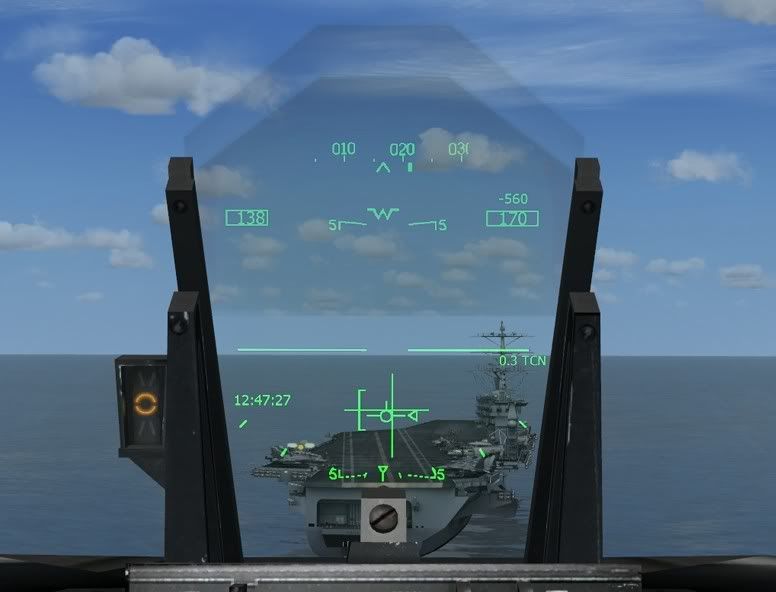Spaz, the ILS needles in the HUD are referenced to the velocity vector symbol. If the velocity vector is
below the horizontal (glideslope) needle, this means that the aircraft is
below glideslope and needs to climb. If the velocity vector is
left of the vertical (localizer) needle, this means that the jet is
left of the runway centerline and a correction to the right is required. If the needles are centered on the velocity vector symbol, this means that you are exactly on glideslope, on centerline. If your position relative to the glidepath doesn't change, the needles will stay in the same position relative to the velocity vector no matter where the vector is currently on the HUD.
A full-scale deflection of the glideslope (horizontal) needle represents ±1.4° deviation from glideslope (center ball) and the localizer (vertical) needle full-scale deflection represents ±6° deviation from centerline. So the glideslope needle is more sensitive than the localizer needle. Also, because they represent the deviation in degrees, rather than distance, as you get closer they become much more sensitive, just like the ball.
Here is an example of the aircraft left of centerline and below glideslope:

Sludge, bear with my questions please - I'm not familiar with these systems. Do the crosshairs in the circle indicate on glideslope, lined up? I'm not complaining here, so in your screenshot as indicated by the ball 'slightly low' your glideslope indicates 'slightly low'? What is lineup info? Is that still visual? Both yours and neutrino's night screenshots are lined up so it is not clear to me about line up.